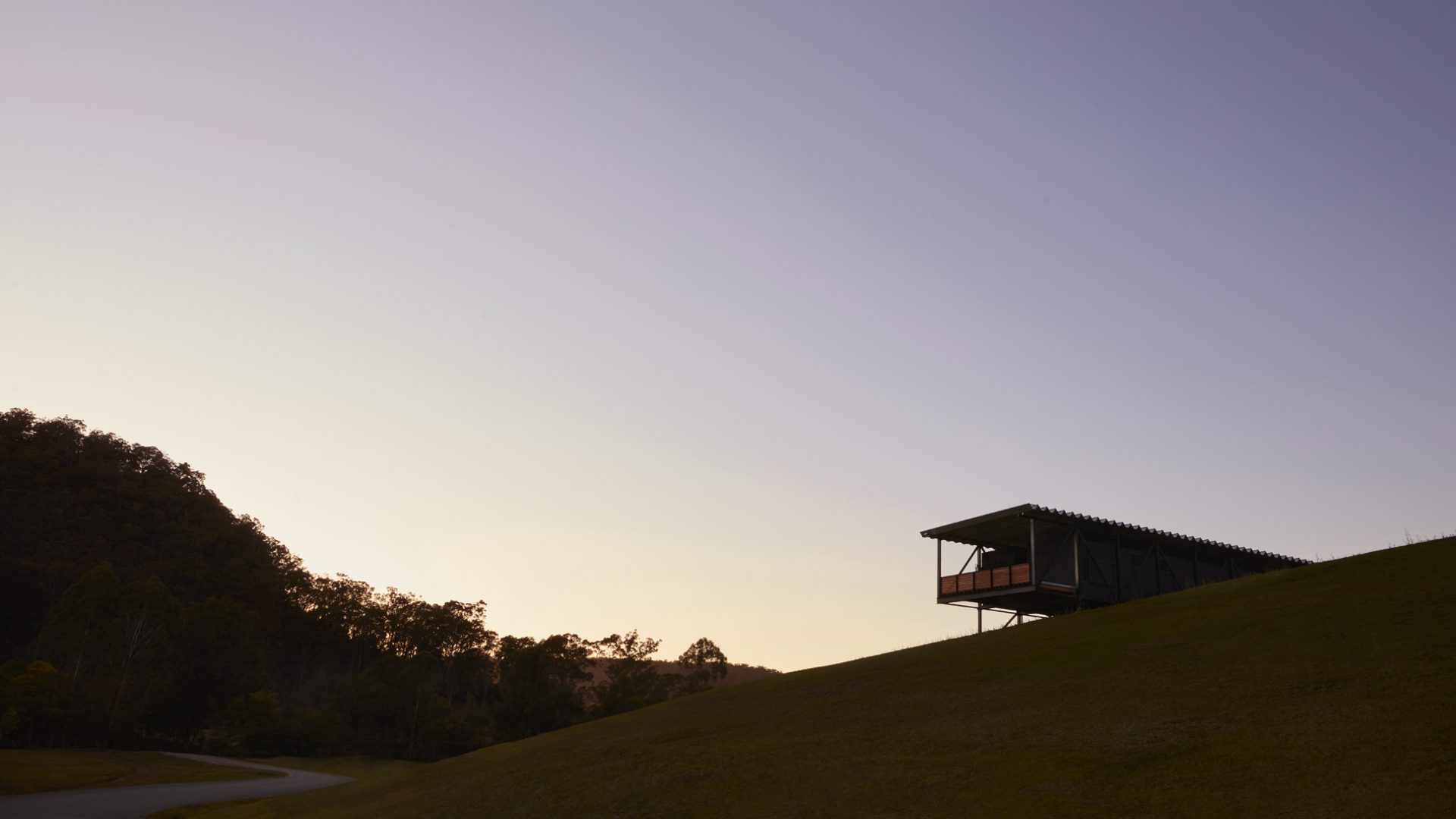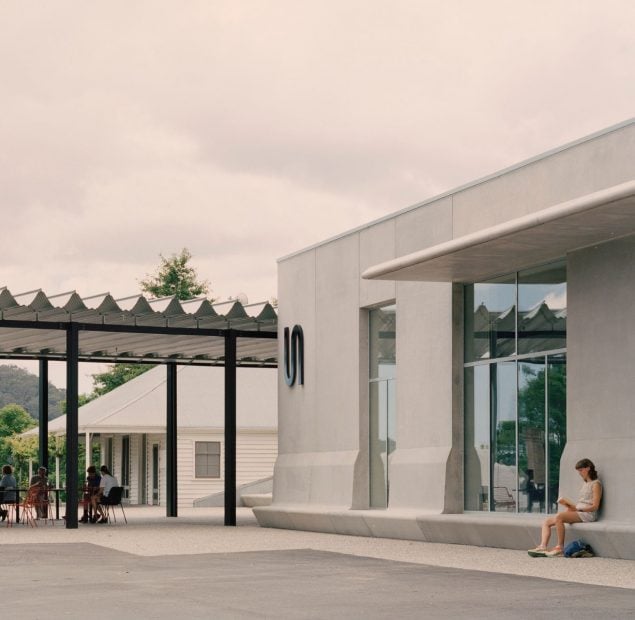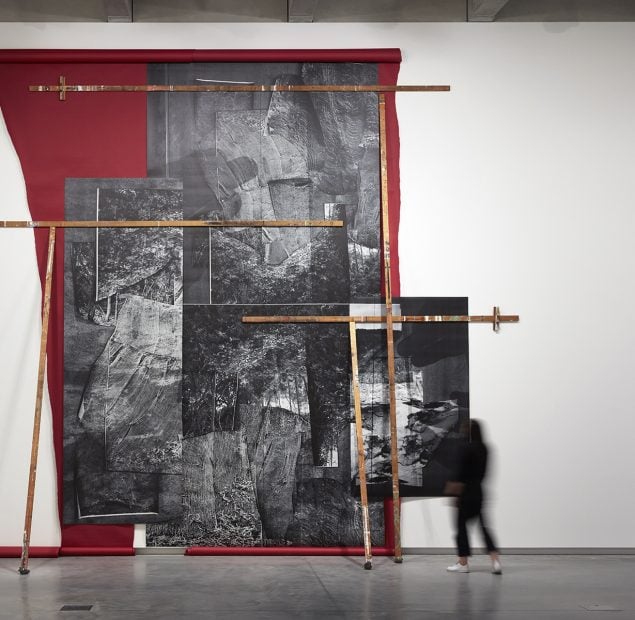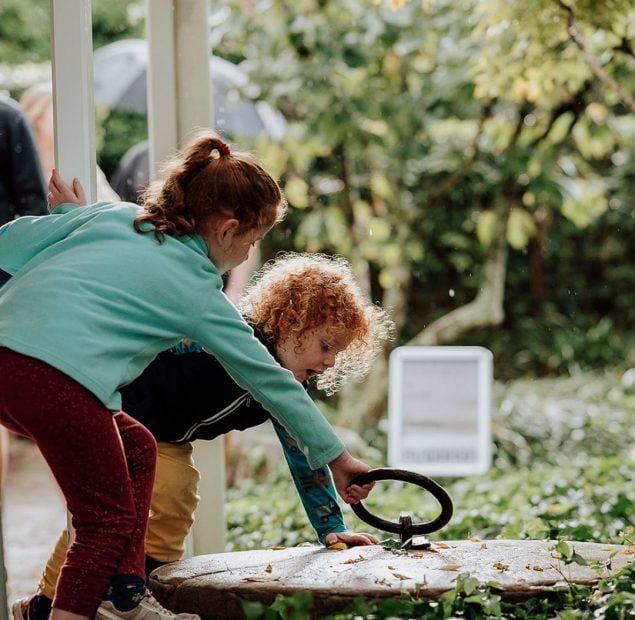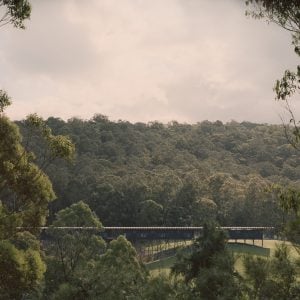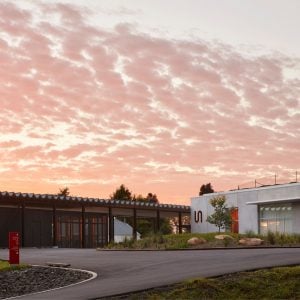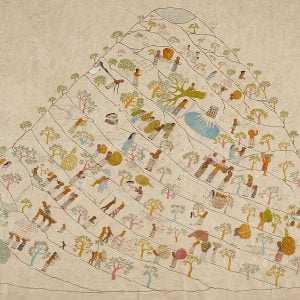“Bundanon’s new Art Museum and the Bridge for creative learning address how buildings and landscapes can be both resilient and resistant. The Art Museum has to be resistant to fire. The Bridge has to be resilient and let the floodwaters flow unimpeded. This project is a celebration of those forces on the site.” – Kerstin Thompson
- The new Bundanon development incorporates radical solutions to a changing climate with a net zero energy target and will be defensible against fire and flood.
- The design addresses how buildings and landscapes can be both resilient and resistant. The Art Museum is resistant to fire. The Bridge has to be resilient and let the overland flow and floodwaters flow unimpeded.
- The new Art Museum and the Bridge have been sited within the small portion of the site above the 100-year flood line.
- The entire site will be solar powered, saving energy consumption with provision for a battery system.
- Bundanon will harvest and store rainwater in a 300kl tank for supply, and use black water treatment processes to reuse wastewater: an integrated, sustainable practice for onsite water management.
- With a reduced reliance on fossil fuel sources, Bundanon provides heating and cooling for the gallery via a geothermal array feeding a central heat rejection system connected to air handling units.
- The major new building, the Bridge, which includes education and accommodation areas, is treated like a piece of flood infrastructure. The architecture supports rather than impedes the natural system of water flow across the site.
- The organisation has its own carbon farming process and has 12,000 carbon credits.
- The core design team for the new Art Museum and the Bridge consisted of architects (Kerstin Thompson Architects), landscape architects (Wraight Associates with Craig Burton), services engineers (Steensen Varming) and sustainable design engineers (Atelier 10). All four groups developed the design. Together they generated a concept that integrates architecture and landscape within a broader continuum of sustainable environmental systems, ecology and site infrastructure.
- Sensitively embracing the existing landscape and its ecology, the design responds to current and future climatic conditions with inspiration drawn from rural Australia’s trestle flood bridges.
- Recalling the trestle bridges endemic to flood landscapes such as this, the dramatic bridging structure straddles the gully from ridge to ridge, allowing sporadic waters and the overland flow to move beneath it. The approach also guarantees the reinstatement of the wet gully ecology.
- Locally sourced/quarried stones in aggregate of paving slabs;
- Local sourcing of materials and labour;
- Local and native, drought- and bushfire-tolerant plant species selections;
- High performance, Low E, bushfire resistant window treatment/nil fire glass;
- Radcon timber cladding which has no wastage;
- Robust metal cladding with integrated colour to the external of the bridge, reducing the need for repainting or recladding;
- Armourply hardwood lining locally sourced, sustainable forestry etc.
- Precast concrete beams, wall panels, floor etc.
- The Art Museum and Collection Store are subterranean. Artworks are housed and exhibited in an underground building, which protects the works from diverse climate conditions and offers thermal stability in the form of the reinstated hill. With only one external façade, the building envelope is otherwise protected from thermal gain and therefore reduces the reliance of the gallery on mechanical systems and additional energy required to run these for climate control and stability.
- The galleries provide a balance of natural and artificial light to suit the installations, with the flexibility to close off natural light sources when the art is deemed too sensitive.
- Bundanon is a very bespoke, Australian response that is reflective of national vernacular when it comes to environmental response in architecture.
- The design speaks to a new cohort of sustainability and is exemplar in Australia’s institutional repertoire.
- The design aligns the needs of the various functions with an appropriate level of thermal/climate control within the Art Museum.
- A counterpoint to this is The Bridge which by contrast is in the spirit of Arthur Boyd’s practice of painting en plein air where climate variation is central to one’s (the visitor’s) experience.
- In the spirit of en plein air the accommodation rooms incorporate passive, manually operated systems for environmental control enabling visitors to tune the room to their needs: adjustable timber louvres, a sliding perforated metal screen over the windows and louvres to manage air flow and sunlight (and insects!) and a ventilation panel above the entry door to assist cross flow.
- The roof of the gallery has earth planted with native grasses to provide insulation from heat gain;
- The Bridge roof is made from Aramax. It functions as a parasol that effectively shades the breezeway spaces and also the accommodation rooms which have their own independent roofs below and with an air gap to enhance air flow and passive cooling.
- The accommodation rooms are arranged in banks with breezeways between them and with open air corridors for air flow.

